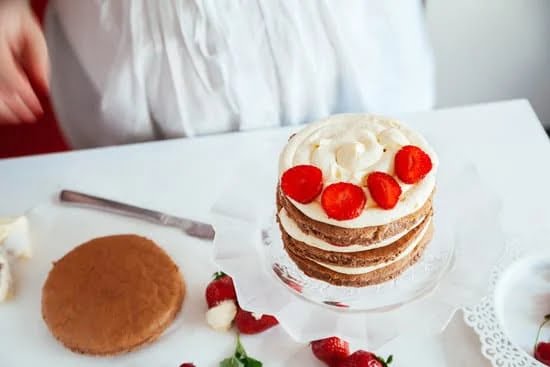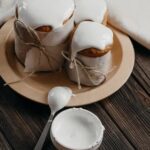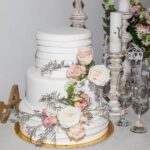When it comes to creating stunning cakes, one cannot underestimate the significance of cake decorative materials. These materials hold the power to transform a simple cake into a masterpiece, elevating its overall appearance and leaving a lasting impression on guests. The right decorative material can enhance the theme, design, and aesthetic appeal of cakes, making them truly stand out.
In the world of cake design, there is an extensive array of different types of cake decorative materials available in the market. From edible options like fondant, sugar flowers, and edible glitter to non-edible materials such as ribbons, fabric, paper, and plastic – each type brings its unique characteristics and features to table. These materials act as creative tools for adding character, texture, and dimension to cake designs.
In recent years, there has been a notable trend towards using edible decorative materials in cake designs. Fondant creations that look like works of art are now commonly seen at weddings and other special events. Edible glitter adds a touch of sparkle to create glamorous cakes fit for royalty. The allure of using these materials lies not only in their visually striking appearances but also in their ability to be consumed along with the cake itself.
The choice of decorative material for your cake ultimately depends on your personal preference and the specific occasion or theme you have in mind. Whether you opt for the edible route or decide to unleash your creativity with non-edible materials, there is no shortage of options to choose from. In this article series, we will delve into different types of cake decorative material available on the market and explore how they can be effectively incorporated into various cake designs.
So join us on this culinary journey as we dive into the world of cake decoration materials – from mouthwatering edibles to inventive non-edibles – all aimed at helping you take your cakes from ordinary to extraordinary. With these tools at your disposal, you have the ability to unleash your inner artist and create cakes that not only look stunning but also taste just as exquisite as they appear. The possibilities are endless, and the only limit is your imagination.
Overview of Different Types of Cake Decorative Material
Cake decoration is an essential element in creating stunning cakes, as it elevates the overall appearance and adds a touch of elegance to any confection. The right choice of decorative materials can enhance the theme, design, and aesthetic appeal of cakes, taking them from ordinary to extraordinary. With a plethora of options available in the market, it is important to have an overview of the different types of cake decorative material.
- Fondant: Fondant is a popular choice for cake decorators due to its versatility and smooth finish. It can be rolled out and draped over cakes to create a sleek and polished look. Fondant also allows for intricate designs, making it ideal for themed or custom cake designs.
- Sugar Flowers: Sugar flowers are a classic choice for cake decorations. These delicate blooms are crafted using sugar paste or gum paste and can be made in various shapes and colors. Sugar flowers add a touch of elegance to wedding cakes or special occasion cakes.
- Edible Glitter: Edible glitter brings sparkle and glamour to any cake design. It comes in various colors and can be used sparingly or generously depending on the desired effect. Edible glitter is perfect for adding a touch of magic to birthday cakes or festive creations.
In addition to these options, there are many other types of cake decorative materials available:
- Buttercream: Buttercream frosting is not only delicious but also serves as a versatile decorative material. It can be piped into intricate designs, including rosettes, borders, or even sculpted figures.
- Candy: Adding candy as a decorative material provides both color and texture to cakes. From gummy bears to chocolate candies, these sweet treats can be used as accents or even as building blocks for creative designs.
- Sprinkles: Sprinkles are a simple yet effective decorative material that can instantly transform cakes. Whether in the form of colorful jimmies or metallic dragees, sprinkles add a playful touch to any cake design.
Each type of cake decorative material has its own unique characteristics and features, making it suitable for different occasions, styles, and cake designs. Understanding these options allows decorators to choose the perfect materials that align with their vision and bring their cake designs to life.
Edible Cake Decorative Material
Edible cake decorative materials have become increasingly popular in recent years, adding a delightful and mouthwatering touch to confections. With the wide variety of edible options available in the market today, cake decorators have endless possibilities for creating stunning and delectable designs. From fondant to sugar flowers to edible glitter, these materials not only enhance the visual appeal of cakes but also provide an enjoyable experience for those indulging in them.
One of the most commonly used edible decorative materials is fondant. Fondant is a smooth, pliable icing that can be rolled out and draped over cakes to give them a flawless and professional look. It allows for intricate designs, from sculpted figures to delicate lace patterns. Fondant comes in various flavors and colors, allowing decorators to customize their creations according to their clients’ preferences.
Another popular choice for edible decorations is sugar flowers. These delicate floral creations are meticulously crafted from flavored sugar paste or gum paste and can be created in almost any shape or color desired. Sugar flowers add an elegant touch to wedding cakes or other special occasion cakes, creating a truly stunning centerpiece that’s also completely edible.
Adding a touch of sparkle and glamour to cakes has never been easier with the availability of edible glitter. Edible glitter comes in various shades and sizes, allowing decorators to create mesmerizing effects on their cakes without compromising on safety or taste. Whether sprinkled generously over an entire cake or used sparingly on specific areas for subtle accents, edible glitter adds an eye-catching element that’s sure to captivate anyone’s attention.
One of the advantages of using edible decorative materials is that they can be enjoyed along with the cake itself. Unlike non-edible decorations that need to be removed before serving, guests can savor every aspect of a cake adorned with edible elements. This not only adds a unique touch but also ensures that every bite is a pleasurable experience.
Incorporating edible decorative materials into cake designs allows for endless creativity and innovation. Whether it’s a wedding, birthday, or any other special occasion, these materials provide the opportunity to create confections that are not only visually appealing but also absolutely delicious. So go ahead and let your imagination run wild with edible cake decorative materials – the possibilities are truly limitless.
Non-Edible Cake Decorative Material
Cake decorating is an art form that allows for endless creativity and expression. While edible decorative materials like fondant and sugar flowers are popular choices, non-edible cake decorative materials offer a unique opportunity to unleash your imagination and add a distinctive touch to your cake designs. From ribbons and fabrics to paper and plastic, these materials can enhance the overall aesthetic appeal of cakes, adding character, texture, and dimension.
One of the advantages of using non-edible decorative materials is their versatility. Ribbons, for example, come in various colors, patterns, and textures, making them suitable for a wide range of cake designs. They can be intricately woven around layers or used to create bows and rosettes as stunning focal points.
Fabric can also be a great option, especially for themed cakes or occasions where specific patterns or motifs need to be incorporated into the design. Whether it’s a vintage-inspired lace fabric or a bold geometric patterned fabric, the possibilities are endless.
Another non-edible material that can add visual interest to cakes is paper. Customized cake toppers made from cardstock paper or patterned scrapbook paper can create personalized designs that reflect the theme or occasion. Additionally, delicate origami decorations or paper flowers can add a whimsical touch to any cake design.
When incorporating non-edible materials into cakes, it’s important to consider their functionality. While they may not be consumed with the cake itself, they should still be food-safe and hygienic. Opt for materials that are easily cleaned or coated with food-grade protection if they will come into direct contact with the cake surface.
Exquisite Cake Decorative Material for Special Occasions
Special occasions call for special cake designs, and the choice of decorative material can play a crucial role in creating the perfect confection for these events. Whether it’s a wedding, a birthday, or a baby shower, there are various exquisite decorative materials specifically tailored for each occasion. These carefully selected materials not only enhance the overall aesthetic appeal of the cake but also help create a personalized and memorable experience for the guests.
Weddings
Weddings are one of the most significant events in people’s lives, and they often call for cakes that are just as extraordinary. When it comes to cake decorative material for weddings, options abound. From delicate sugar lace decorations to elegant sugar flowers, there are numerous ways to incorporate a touch of sophistication into wedding cake designs.
Metallic accents, such as gold or silver leafing or edible pearls, can add a luxurious feel to the cake while complementing the overall theme and color scheme of the event. For couples seeking a more whimsical approach, hand-painted designs or monograms made from edible ink can be used to create truly unique and personalized wedding cakes.
Birthdays
Birthdays provide an opportunity to let creativity soar when it comes to cake design. The choice of decorative material depends on factors such as the age of the birthday celebrant and their interests. For children’s birthdays, fondant figures representing beloved cartoon characters or superheroes can bring joy and excitement to the cake.
Edible sprinkles in vibrant colors can add a festive touch and make any birthday cake feel extra special. On the other hand, adults may prefer more sophisticated decorations like fresh flowers (carefully chosen to ensure they are non-toxic), elegant patterns made with piping techniques, or chocolate ganache drizzles that provide both textural interest and indulgence.
Baby Showers
Baby showers celebrate new beginnings and often involve themes revolving around babies and motherhood. When it comes to decorative materials for baby shower cakes, options like pastel-colored fondant, sugar-dipped fruit, or candy melt decorations can be used to create adorable designs.
Edible baby booties, onesies, or pacifiers can bring an extra touch of cuteness to the cake. Incorporating relevant accessories like rattles, rubber ducks, or miniature baby carriages made from edible materials can further enhance the theme and make the cake a focal point of the celebration.
Regardless of the occasion, incorporating special decorative material into cake designs elevates them from ordinary desserts to works of art. These personalized creations not only serve as a centerpiece but also leave a lasting impression on guests. By carefully selecting the appropriate decorative material for each event, bakers can create confections that are truly exquisite and memorable.
DIY Cake Decorative Material
Tapping into Your Creativity
One of the most rewarding aspects of cake decorating is the opportunity to unleash your inner artist and create unique, personalized designs. DIY cake decorative materials allow you to channel your creativity and add a personal touch to your cakes. Whether you are a seasoned baker or just starting out, creating your own decorative materials can be a fun and fulfilling experience.
Easy Tutorials and Techniques
Making your own cake decorative materials may seem daunting at first, but with the right tutorials and techniques, it can be surprisingly simple. From crafting sugar flowers to designing custom cake toppers, there are countless resources available online that offer step-by-step instructions for creating stunning decorations. These tutorials cater to all skill levels, making it accessible for beginners and experienced decorators alike.
Cost-Effectiveness and Satisfaction
Using self-made decorative materials also offers the advantage of cost-effectiveness. While pre-made decorations can be expensive, crafting your own allows you to save money without compromising on quality. Additionally, the satisfaction that comes with seeing your creations adorn a beautifully decorated cake is truly unmatched. The sense of accomplishment derived from using homemade decorative materials adds an extra layer of pride and joy to every creation.
So why not unleash your inner artist and try your hand at creating DIY cake decorative material? With a little practice and experimentation, you can elevate the visual appeal of your cakes while expressing your unique style in every confectionary masterpiece.
Cake Decorative Material Trends
In the ever-evolving world of cake decoration, staying current with the latest trends is essential for creating stunning and fashionable cake designs. The choice of decorative materials can make or break a cake’s aesthetic appeal, and following trends can add a contemporary touch that sets your creations apart. Here, we explore some of the latest cake decorative material trends that are capturing the imagination of both bakers and cake enthusiasts alike.
One trend that has been gaining popularity is the use of metallic accents in cake designs. Gold, silver, rose gold, and copper tones add a touch of sophistication and glamour to any cake. Metallic edible paints, dusts, or foils can be used to create eye-catching effects on fondant-covered cakes or to highlight specific details. These metallic accents can be combined with other design elements like sugar flowers or geometric patterns for a modern twist on classic cake designs.
Another trend that has taken the cake decorating world by storm is geode-inspired designs. Geodes are crystalline rock formations with vibrant colors and unique patterns inside. Bakers have been replicating these natural wonders on cakes using intricate techniques like marbleization, hand-painting, or piping colored chocolate into cracks and crevices. The use of edible rock candy or sugar crystals adds an extra touch of authenticity to geode-inspired creations.
For those who prefer minimalistic styles, less is definitely more in current cake decoration trends. Clean lines, simple color schemes, and understated design elements create an elegant and sophisticated look that highlights the beauty of simplicity. Non-edible materials like acrylic discs or wooden toppers can be used to effortlessly achieve this minimalistic vibe.
Keeping up with the latest trends in cake decoration materials allows you to experiment and infuse your designs with contemporary flair. Whether you choose to incorporate metallic accents, geode-inspired elements, or embrace minimalist styles, following trends is a great way to keep your cake designs fresh and fashionable. With the plethora of resources and ideas available online, there is no shortage of inspiration to take your cake decoration skills to the next level.
Choosing the Right Cake Decorative Material for Your Design
Selecting the appropriate cake decorative material is crucial to achieving a visually stunning and cohesive cake design. The right choice of decorative material can enhance the theme, design, and aesthetic appeal of the cake. When choosing decorative materials, factors such as color scheme, theme, and the environment in which the cake will be displayed should be taken into consideration.
Firstly, consider the color scheme of your cake. The decorative material you choose should complement or enhance the colors used in your cake design. For example, if you have a pastel-colored cake, using edible floral decorations made from fondant or gum paste in similar shades can create a harmonious look.
Secondly, think about the overall theme of your cake. Whether it’s a whimsical birthday cake or an elegant wedding cake, your decorative material should reflect and reinforce the theme. For instance, if you’re creating a beach-themed wedding cake, incorporating seashells made of chocolate or sugar can add a touch of seaside charm.
Lastly, consider where your cake will be displayed and its environment. If your cake will be outdoors during a hot summer day, it’s important to choose sturdy and heat-resistant materials that won’t melt or wilt easily. On the other hand, for indoor events with controlled temperatures, delicate and intricate edible decorations can be utilized without worry.
| Factor to Consider | Decorative Material |
|---|---|
| Color Scheme | Fondant flowers in similar shades |
| Theme | Sugar seashells for beach-themed cakes |
| Environment | Heat-resistant materials for outdoor cakes |
Conclusion
In conclusion, the choice of cake decorative material plays a crucial role in elevating the overall appearance of cakes. By selecting the right materials, you can enhance the theme, design, and aesthetic appeal of your cakes. Whether you opt for edible or non-edible materials, there is a wide range of options available to unleash your creativity and create stunning confections.
Edible decorative materials have become increasingly popular in recent years. Fondant, sugar flowers, and edible glitter are just a few examples of the mouthwatering options you can incorporate into your cake designs. The benefit of using these materials is that they not only add beauty to your creations but can also be consumed along with the cake itself, adding an extra dimension of flavor.
On the other hand, non-edible decorative materials offer limitless possibilities for adding character, texture, and dimension to your cakes. Ribbons, fabrics, paper cutouts, and even plastic decorations can transform a simple cake into a work of art. With some creativity and expert guidance on how to effectively incorporate non-edible materials into your designs, you can create visually stunning masterpieces.
When choosing the right decorative material for your design, it is important to consider factors such as color scheme, theme, and where the cake will be displayed. Balancing visual impact with taste and texture is key to achieving harmonious results. The good news is that there are endless resources available to help guide you through this process and provide inspiration for incorporating current trends into your cake designs.
Frequently Asked Questions
What is the thing used to decorate cakes called?
The thing used to decorate cakes is commonly referred to as “cake decoration” or simply “cake decor.” It includes a wide range of items that are used to enhance the appearance of a cake and make it visually appealing.
These can include icing, frosting, fondant, edible decorations such as flowers or sprinkles, as well as tools like piping bags, tips, and spatulas that aid in the process of applying the decorations.
What are the materials used for decorating cake?
The materials used for decorating cakes are varied and depend on the desired design and technique. One commonly used material is icing or frosting made from ingredients like powdered sugar, butter, and flavorings. This can be applied using piping bags with different tips to create various designs such as borders, flowers, or writing on the cake.
Fondant, a pliable sugar paste, is another popular choice for cake decorating as it allows for smooth surfaces and intricate sculpting possibilities. Other materials can include edible colors for painting or airbrushing designs onto the cake, as well as edible decorations like candies or chocolate elements.
What do they use to put pictures on cakes?
To put pictures on cakes, a technique called “edible image printing” is often employed. Edible images are made by printing food-grade ink onto thin sheets of icing using specially designed printers that use ink cartridges filled with edible ink. The images themselves can be created using graphic design software or obtained from pre-made designs available online or at specialized cake supply stores.
Once printed and cut to the desired size and shape, these edible images are gently transferred onto a frosted cake surface using techniques such as carefully laying them flat on top of the icing or adhering them directly onto fondant-covered cakes with some water or sugar glue under them. By utilizing this method, personalized photos or intricate designs can be easily added to cakes for special occasions such as birthdays or weddings.

Welcome to our cake decorating blog! My name is Destiny Flores, and I am the proud owner of a cake decorating business named Cake Karma. Our mission is to provide delicious, beautiful cakes for all occasions. We specialize in creating custom cakes that are tailored specifically to each customer’s individual needs and tastes.





